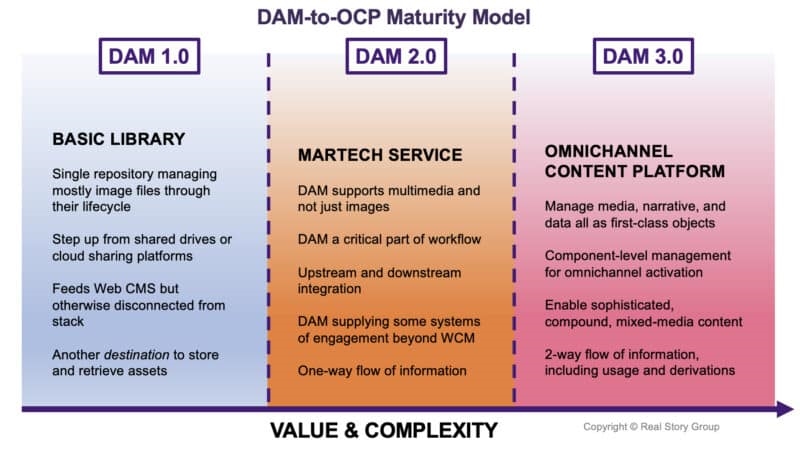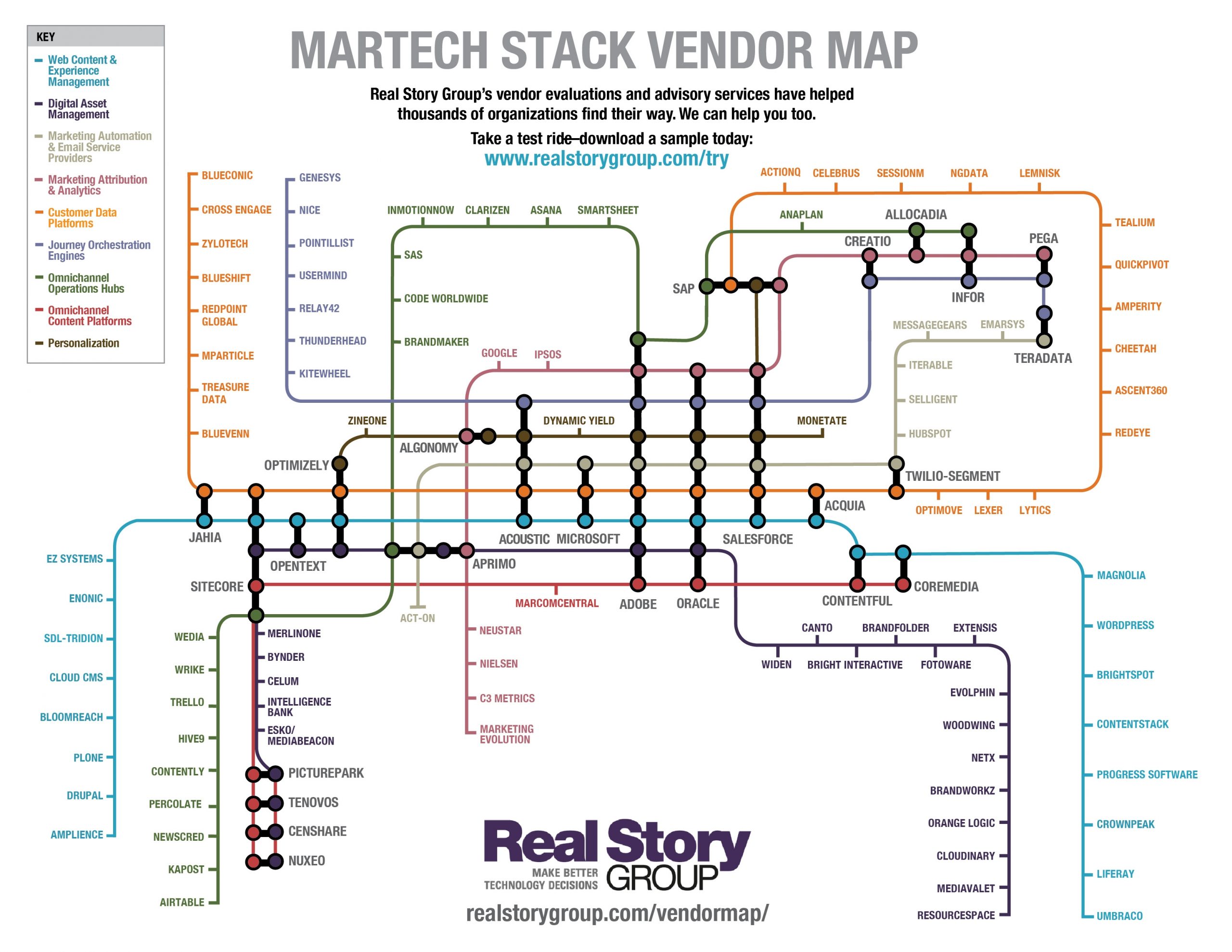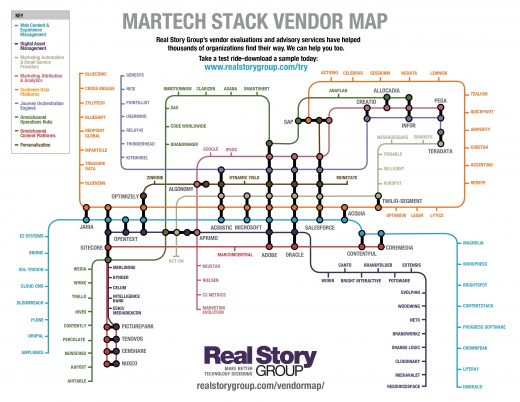Getting to DAM 3.0
There are three stages of maturity in the digital asset management space.
In the last decade of Real Story Group’s coverage of the Digital Asset Management (DAM) marketplace, we’ve seen a marked transition in the complexity of vendor capabilities and buyer objectives. The DAM universe is now segmented into three distinct categories that we label DAM 1.0, 2.0, and 3.0.
In nearly every case, DAM buyers find themselves with a desire to advance their enterprises along this phased maturity spectrum. And for better or worse, DAM platforms in the marketplace tend to cater to buyers in one of these phases.

As a DAM technology customer, you’ll want to honestly assess where your enterprise sits on this maturity spectrum and where you realistically want to get. Once you make this assessment, you can choose a DAM technology that will help — not hinder — you from getting to where you want to go.
DAM 1.0: DAM as a basic library
The hard truth is that many enterprises are still at DAM “Zero,” with assets scattered across the enterprise in a multitude of shared drives, cloud file-sharing services, or on personal devices.
So a first step in your DAM journey is employing a unified system to serve as a single location for an asset to reside throughout its lifecycle. A packaged Digital Asset Management system can help you manage images, video, and audio files from ingestion to publication to archive.
DAM 1.0-level enterprises have a system that serves as a library, where staff can go to check-in and check-out assets. This is can prove a significant improvement over an uncategorized mess you endured before.
While a DAM 1.0 library is an essential starting point, you’ve potentially just created another (albeit better) silo of content in your enterprise. The DAM is just another destination to store and retrieve assets. In order to actually do something with these assets, you need to download them from the DAM and upload them somewhere else.
DAM 2.0: DAM as a marketing tech service
For years, digital asset management was either not included or marginalized in the marketing technology conversation. People viewed DAM as the tool of creatives, brand managers, and even (wait for it…) librarians.
Today, most enterprises recognize that DAM resides firmly in the MarTech conversation, but that DAM has become an anchor service in enterprise stacks.
In a DAM 2.0 model, a DAM system is a critical part of the asset creation workflow. Serving as the repository of record for work-in-progress and/or completed assets, it is integrated with upstream content creation systems and downstream systems of engagement.
Designers store their work products within the DAM directly from their creative tools. Marketers who spend their days creating experiences in systems like web content management, marketing automation, e-commerce, or social publishing tools can pull or reference assets directly from the DAM.
The most mature DAM 2.0 implementations are characterized by a smooth flow of content from creatives to customer touchpoints where the DAM is often invisible to key participants, including marketers.
Still, a key limitation for most DAM 2.0 deployments is that this flow of content is uni-directional and missing opportunities to integrate analytics in a meaningful way. Moreover, these implementations remain limited to binary image and media files, perhaps with some associated “copy,” so they typically don’t cover the full breadth of your marketing and customer experience micro-content.
DAM 3.0: DAM as an omnichannel content platform
In recent years, many enterprises have worked hard to modernize and optimize their marketing and digital experience technology stacks. In most cases, however, silos still persist, and enterprises struggle to provide coherent customer experiences and campaigns across touchpoints.
One way some forward-looking firms are trying to combat content silos is by employing an “omnichannel content platform” or OCP. RSG evaluates a large handful of OCP vendors.
The purpose of an OCP is to act as a single source of truth for a highly curated set of reusable enterprise-wide information assets, such as text, data, and media. An OCP manages and distributes the core assets of an enterprise — not all assets, but a select subset needed to provide consistent customer experiences across channels.
While some OCPs have spun off from the headless web content management and marketing asset management markets, the more capable OCPs have emerged primarily from the digital asset management arena. Several DAM vendors have applied their sophisticated component-level management capabilities to handle narrative content and data alongside of media assets.
In addition to managing media, narrative, and data all as first-class objects, a key feature of a DAM 3.0 system is the introduction of two-way flow of information. For example, robust OCPs should be able to track deployments (including automated pulls) as well as ingest and display enterprise analytics in context.
Finally, OCPs need to be able to manage complex parent-child relationships:
- Between core assets and their many channel-specific derivatives (e.g., the shorter Twitter rendition of a foundational marketing video); and
- Between core assets and where they get included in compound assets (e.g., an image in a video).
In technology terms, this means that OCPs need to be fully “object oriented,” and it turns out that few DAM platforms are built this way. On RSG’s subway map in the past year, we’ve since broken out OCP as a separate (red) line, to distinguish from the DAM (purple) line, though you’ll notice some substantial overlap.

The Red and Purple lines are related, but distinct Source: RSG
The right partner for your DAM journey
Every enterprise lives within one stage of this DAM maturity spectrum, but no one has reached their final destination. Even the most sophisticated enterprises are constantly trying to improve the way they can provide experience creators with the most impactful content.
Like it or not, the DAM marketplace is quite fragmented with regard to vendors’ capabilities to serve each of these phases. We’ve definitely seen cases where enterprise ambitions have gotten throttled by their incumbent DAM vendor. By the same token, I’ve seen enterprises overbuy this technology. An object-oriented, DAM 3.0 (OCP) toolset necessarily brings much more complicated interfaces and integration requirements, and a firm that’s unprepared for this complexity will see negative returns here.
So figure out where you are today, and judge where you’ll likely end up in the mid-term, and make technology choices accordingly.
Real Story on MarTech is presented through a partnership between MarTech and Real Story Group, a vendor-agnostic research and advisory organization that helps enterprises make better marketing technology stack and platform selection decisions.
The post Real Story on MarTech: Getting to DAM 3.0 appeared first on MarTech.
(61)



